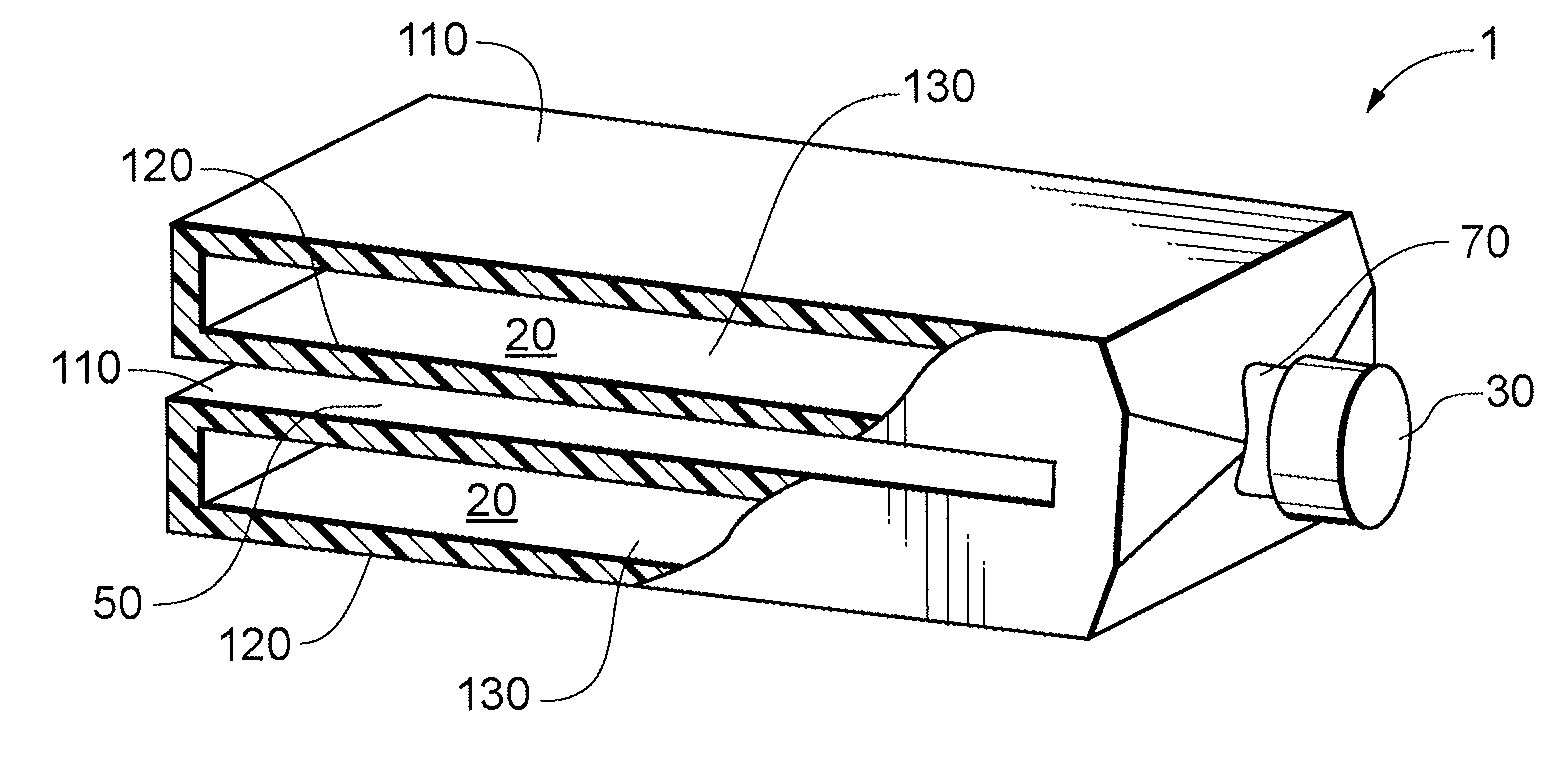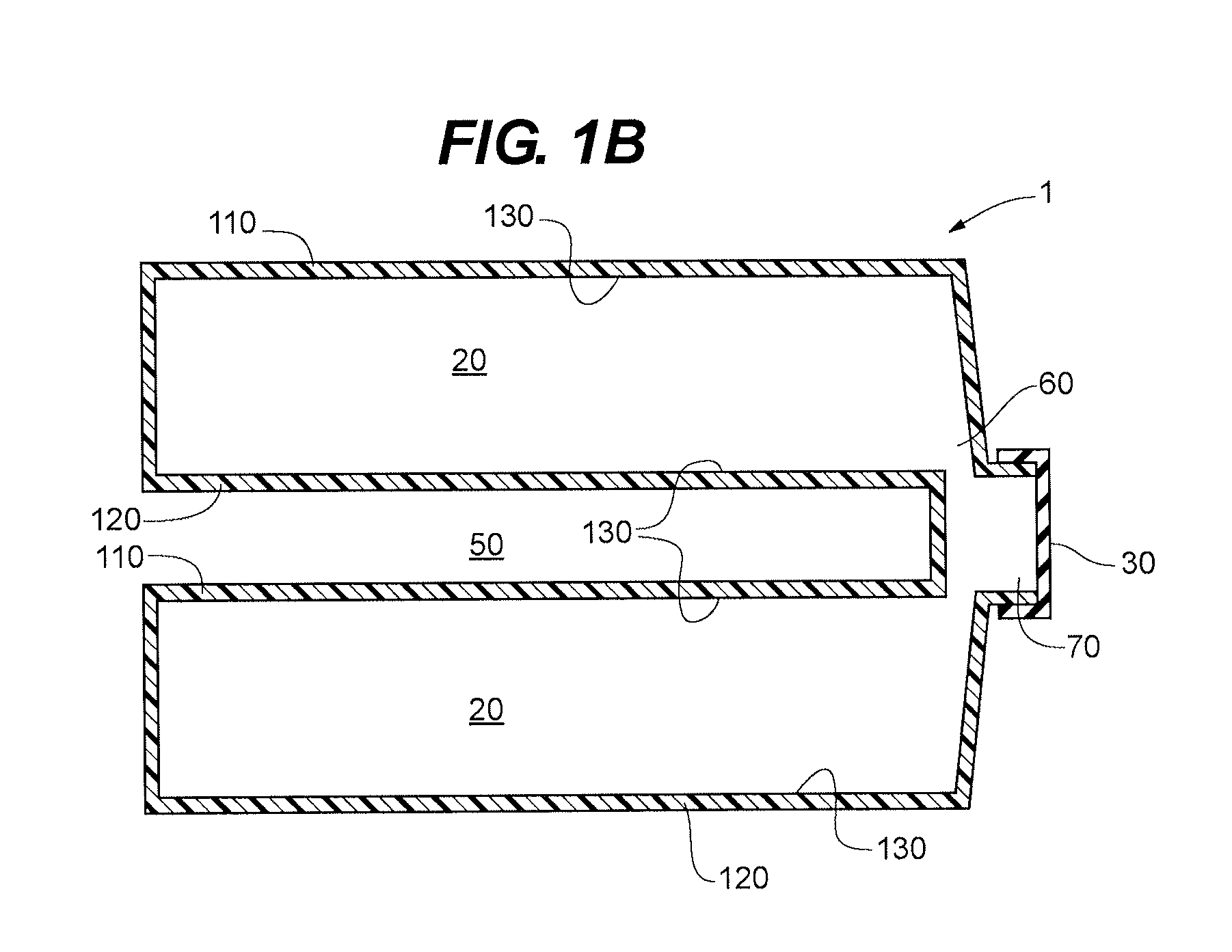Highly efficient gas permeable devices and methods for culturing cells
a gas permeable device and cell technology, applied in the field of methods and devices, can solve the problems of inefficient use of space, large device volume of flasks, and burdening the culture process with excess cost, and achieve the effect of minimizing migration to other surfaces
- Summary
- Abstract
- Description
- Claims
- Application Information
AI Technical Summary
Benefits of technology
Problems solved by technology
Method used
Image
Examples
example 1
Culture Compartment Support Structures for Cultures with Very High Oxygen Demand
[0095]The physical structure of a culture compartment support that would allow an improvement in islet culture, known to be one of the highest types of cultures for oxygen demand, was demonstrated by constructing a test fixture that had its lower wall comprised of a molded dimethyl silicone sheet with an average thickness measured at about 0.0072 inches thick and a surface area of 98 cm2. Gas transmission of the dimethyl silicone rubber was determined by MOCON (Minneapolis, Minn.) using their Oxtran 2 / 21 Instrument in accordance with ASTM-1927 to be about 14,300 mlO2 / 100 in2 / 24 hours at 37° C. The culture compartment that supported the dimethyl silicone consisted of a 0.048 cm thick, 46% open, mesh in direct contact with the silicone. The open mesh was comprised of a series of polypropylene strands, each with a diameter of between 0.018-0.020 inches thick, arranged vertically and horizontally such that 1...
example 2
[0099]A different physical structure of a culture compartment support than that of Example 1 was examined in another islet culture application. In this example, test fixtures included virtually identical gas permeable material as that of Example 1. The culture compartment that supported the dimethyl silicone consisted of an open mesh in direct contact with the silicone, and a machined polycarbonate plastic sheet supported the mesh in a generally horizontal position. Unlike the culture compartment support of Example 1, the mesh resided directly upon the upper surface of the plastic sheet. The mesh geometry and material composition was identical to that of Example 1. For each cm2 of silicone membrane surface area, the volume of gas between the lower surface of the silicone and the upper surface of the plastic bottom, after displacement by the mesh, was 0.022 ml. Stated differently, the ratio of gas volume between the plastic sheet and the gas permeable membrane to the surface area of ...
example 3
Minimizing the Migration of Silicone During Gamma Irradiation
[0104]Test fixture 162 was constructed as shown in the cross-sectional view of FIG. 20. Test sample 165 was fabricated of dimethyl silicone and placed onto the top of the body of a commercially available polystyrene tissue treated six-well plate, shown as item 167 (COSTAR® 3516). The polystyrene lid 168 was then placed onto six-well plate 167. The ability to minimize migration of silicone onto inner lid surface 169 and onto tissue culture treated surface 166 by plasma charging test sample 165 prior to gamma irradiation was evaluated. Test sample 165 resided at a distance of about 1.78 cm from tissue culture treated surface 166, and less than 2 mm from inner lid surface 169. In one evaluation, test sample 165 was subjected to plasma charging prior to placing it within test fixture 162 and the presence of the plasma charge was confirmed by a water drop contact angle of ninety-six degrees and a surface energy of less than thi...
PUM
| Property | Measurement | Unit |
|---|---|---|
| height | aaaaa | aaaaa |
| thickness | aaaaa | aaaaa |
| height | aaaaa | aaaaa |
Abstract
Description
Claims
Application Information
 Login to View More
Login to View More - R&D
- Intellectual Property
- Life Sciences
- Materials
- Tech Scout
- Unparalleled Data Quality
- Higher Quality Content
- 60% Fewer Hallucinations
Browse by: Latest US Patents, China's latest patents, Technical Efficacy Thesaurus, Application Domain, Technology Topic, Popular Technical Reports.
© 2025 PatSnap. All rights reserved.Legal|Privacy policy|Modern Slavery Act Transparency Statement|Sitemap|About US| Contact US: help@patsnap.com



